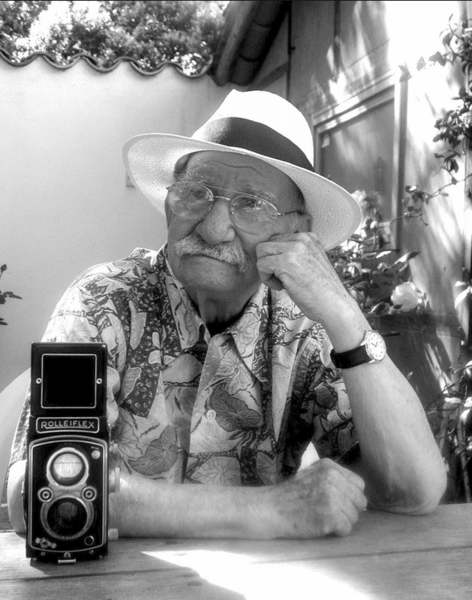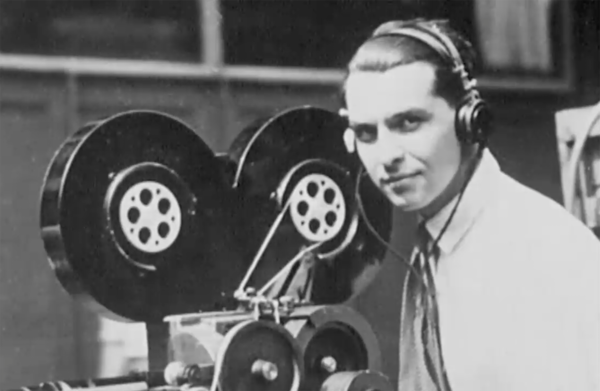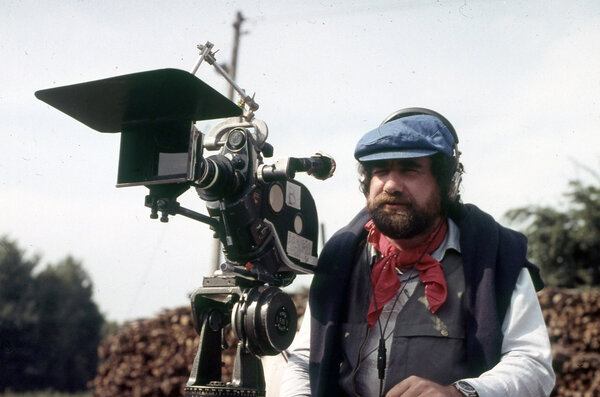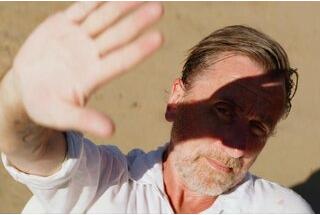Still images, moving images
In which Jimmy Glasberg, AFC, evoked his childhood and his early years behind the cameraThose were very exactly the words that Jimmy Glasberg wrote to me in the email he sent to me along with his biography… I had asked him to tell me two or three things about himself because a friend wanted to feature certain cinematographers at the Rencontres Photographiques in Arles where a show had already been organized featuring the work of his father, a photographer. This event never took place and this train - like so many others -remained in the station, but Jimmy’s words remained and I didn’t need to "change" a single one. (Gilles Porte, AFC)
I’m the son of a photographer. My father, Georges Glasberg, was invited to present his work as part of the 14th Rencontres Internationales de la Photographie in Arles.

1950s : My youth in Provence
I grew up sharing my father’s passion for photography. In the 50s, he had created a photography store called "Studio de Provence" in Apt, in the Luberon. During school holidays, I would assist him in his photography and his laboratory work. Marriages, communions, summer camp groups, Harcourt-style photographs, etc. We moved into a farm in the midst of vineyards in Oppède, where he built a laboratory in very primitive conditions. We’d wash the photos in buckets of water we had to draw from a well ! It was at this time that he created the work, co-signed by writer Jean-Paul Clébert : "Provence Insolite" published by Grasset and then "Paris naïf" with Paul Guth, "Les Monstres de Bomarzo" on a text by André Pieyre de Mandiargues. And photos of dance, theatre, etc.

In June 1983, as part of the "Rencontres", I shot images on my own, which I used in an "experimental" short film I named "D76" after the developer I used and which had turned my fingertips yellow. Supported by Gédeon productions, I was able to finish the film ; I wanted to interrogate the filial passage from still image to moving image. My father was also passionate about the silent films from the early years of cinema, which he would screen for us on his Pathé Baby he’d bought at a flea market.
1960s : Actualist
I went to Paris, determined to become a cameraman and a documentarist. After a brief stint at the Sorbonne and the IDHEC preparatory classes, my draft deferral ended and I was sent to Algeria, where I hoped to become part of the Service cinéma des Armées. In 1961, I met Georges Méjat, an old cameraman from the Fox Movietone newsreels. Georges had started as a "cameraman" at the start of the century, turning the crank on a camera to the tune of La Madelon (a WW1-era French popular song). He’d had a long, glorious career : he’d traveled the world with his camera. He was the oldest member of the staff of Fox’s newsreel department, he was very respected because of his achievements. He saw that I was passionate about cinema and he took me under his wing.

On Sunday morning, I recall, we would meet in Fox’s offices located behind the LTC laboratories where he’d open the padlock on his closet to show me the period 35mm cameras. Magical !!! He then taught me how to load film and soon allowed me to shoot "cutaway shots" at the Longchamp horse races, car races, and decoration ceremonies at the Arc de Triomphe… Georges entrusted me with the Le Blay camera with clear viewfinder and 15-metre chargers, teaching me the rules for viewpoints for editing. I was very proud to find myself mixed in amongst the cameramen from the 5 competitor newsreel studios at the time. I would slip through them with my Le Blay camera to find the right angle. Later, I was given the 30-metre Bell & Howell Eyemo which came with 3 lenses : 35mm, 50mm, and 85mm, which became my silent camera that followed me through a large part of my career. The Caméflex and the Arriflex 120 Meters with reflex viewfinders came later.
I think it’s in these Actualist practices that I understood the basis of how to shoot and edit. Animated images were at the service of a historical event. Photography that told a story in images seemed obsolete, although I admired the images produced by my father and his contemporaries.
Television
The era of newsreels came to an end…
The ORTF took power and showed black-and-white images on a single channel at noon and in the evening. There were two news broadcasts per day, and then "televised magazines" were created. As I had been introduced by Méjat, I was able to become a freelance cameraman reporter. I had to wait seated on a bench near the office of the head of planning to be assigned a story to shoot. I would then leave with my Bell & Howell 16mm and a 30-metre reel with a flashman-driver behind the wheel of a DS 19 bearing the words "Television News" and the symbol of the ORTF. I was very proud of my professional status. Later on, I became a full reporter with an official press card and I was able to travel the world with my camera.
A great technological revolution : the arrival of the Coutant-Mathot camera. It was auto silent and synchronized with the magnetic sound recorder. This camera had been tested out by Pierre Lhomme on Le Joli mai by Chris Marker. It weighed 12 kg and although it was heavy, its ergonomics were very good for shoulder stability and for holding one’s eye against the viewfinder. The sequence shots were synchronized and our camera movements were guided by the sound.

I experienced this technological revolution from its earliest days. A second channel was eventually created. The Télé Europe Agency hired me to work on the televised magazines produced by journalists Sédouy & Harris who entrusted me with reports for "Zoom", "Seize millions de jeunes", and later "Bouton Rouge".
I quickly tamed my shoulder camera in order to shoot long sequence shots with synchronized sound. I would shoot about 6,000 metres of 16mm film per week. I was free, I’d take technical risks by overdeveloping the emulsions for low-light conditions. I would push the 4X Kodak to 1,000 ASA, which increased the graininess and I would fight for these images, which were distinct from the "clean", academic shots. This long period as a reporter caused me to meet directors and journalists who were my age and who were also starting out in their profession. I could name Garrel and Laperoussaz, who made careers in the cinema, and other less-known ones. For "Bouton Rouge" magazine, I would go to London once a month. I had created a style of filming sequence shots, which lasted for the length of the song, ,and I would hold my camera on my shoulder, and sometimes at arm’s length standing in the middle of the musicians on stage. I had adapted at 16 mm fixed-length Arri lens for my camera, whose frontal was at the back of the mount and prevented light diffusion except when I was shooting the musicians from very close up in motion and using the light flows to punctuate the image. The list of musicians I filmed on stage is long, the most famous film is "Stax Tour" with Otis Reding and Sam & Dave who I shot extremely close up. I uploaded that film to Vimeo.
(The thumbnail image above shows a screenshot of Jimmy Glasberg excerpted from the interview conducted by Gilles Porte)
(Translated from French by A. Baron-Raiffe, for the AFC)
 En
En Fr
Fr





